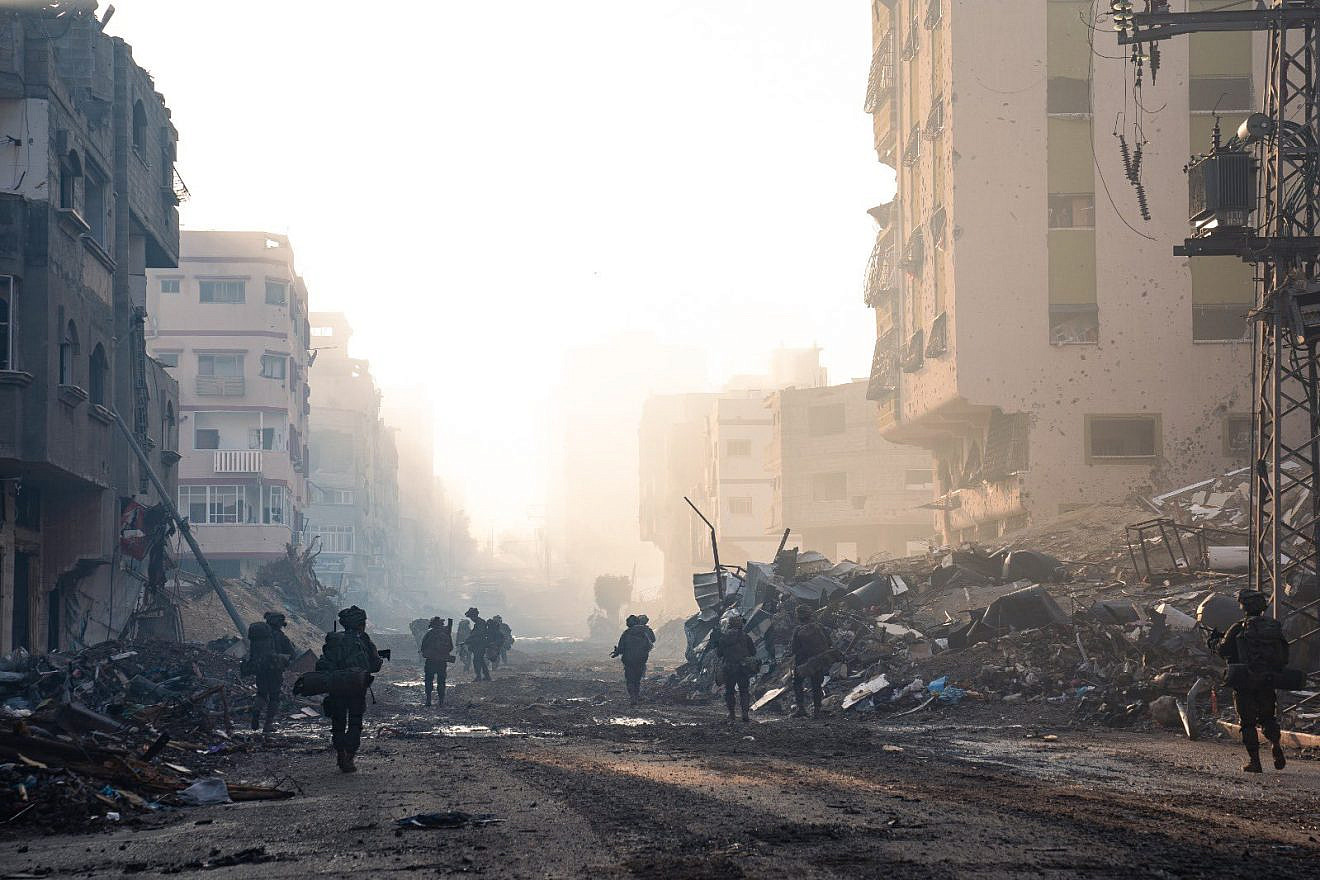It’s noon. Salah ad-Din, the Gaza Strip’s main road, is
filled with thousands of residents moving south
along the humanitarian corridor established by the Israel Defense Forces.
The adults among them, men and women, raise their hands, show identification documents and continue to advance slowly. The main evacuation is now from the Zeitoun neighborhood and Gaza City center.
The forces securing and operating the movement on this axis, which has provided safe passage for hundreds of thousands of people, are from the IDF’s Jerusalem Brigade, comprising reserve infantry units, which joined the operation in the Strip this week. The crowd gathers in an area south of the city center, where the IDF has opened a humanitarian crossing serving as a checkpoint.
The movement in this section of the axis is orderly, and the effort is both to keep an eye on those moving south and to prevent Hamas members from infiltrating the procession and blending in with the population.
As the procession flows south, Israeli forces occasionally stop individuals, telling them to step out of the crowd and approach a sterile area to the east.
החל מהשעה 10:00 אלפי תושבים מצפון הרצועה נענו לקריאות צה״ל ועושים בשעה זו את דרכם לדרום הרצועה, מדרום לנחל עזה, דרך כביש צלאח אלדין. pic.twitter.com/JZeq3HyUaL
— דובר צה״ל דניאל הגרי – Daniel Hagari (@IDFSpokesperson) November 8, 2023
“You with the black shirt, next to you is the child in green, come here,” the soldiers say in Arabic. Every few minutes, they pull out more suspects, who gather in a group at a safe distance from the troops. Some are questioned briefly, others wait, or are sent for further investigation. Others are released a few minutes later.
Everything happens quickly, every second is crucial, and there is no time for mistakes. Suddenly, Hebrew is heard. “If there is a child who understands Hebrew, run over here now,” the soldiers announce. “Don’t be afraid, come to me.”
These calls in Hebrew are part of the effort to identify and locate hostages abducted by Hamas terrorists on Oct. 7. It is aimed at Israeli captives who may have been forced to blend together with residents flowing to the south.
Since it was announced, about 330,000 Gazans have passed through the humanitarian crossing. The evacuation of the population is crucial, both for their own protection and to allow freedom of action for Israeli forces. In addition to Salah ad-Din Road, which is the main route, there is also a humanitarian corridor along the coast in the western part of the Strip.
According to IDF estimates, there are still tens of thousands who have not evacuated. However, the number of those insisting on staying in their homes in the north is decreasing as the fighting progresses.
When the smoke clears and the shooting stops, for many of the people walking here, life will certainly be divided into before and after the war.
The evacuees continue onward, trying not to look back. No one knows when they will return, or what things will look like when they do.
Hamas is still present and strong in northern Gaza. Those who disavow Hamas’s Oct. 7 massacre don’t dare to speak up. Only a few even dare to say something like “we don’t condone what happened.” For Israelis that may not sound like a clear-cut rejection of Hamas, but in the current reality, such a stance does carry significance.
“Slowly but surely, we are destroying the enemy. In these areas, there are no residents; everyone has evacuated to create a relatively secure area here at the end of the corridor,” Col. Nitay Okashi, commander of the Jerusalem Brigade, tells me.
Asked whether he believes the war will result in lasting change in Gaza, Okashi says, “We’re working on it.”
“I have great faith in the army and in the country and have high hopes that now Gaza will be transformed, but only time will tell,” he says.
However, he notes that the war is far from won.
“The enemy keeps us on edge, Hamas constantly tries to sneak up on us; we constantly find weapons and tunnel shafts,” he says.
Asked how long he thinks the war could last, he says only that “if it were up to me, you would be able to come back here in two months and walk leisurely along the beach.”
Originally published by Israel Hayom.


























